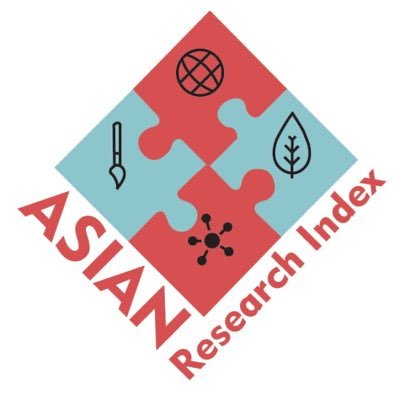Correlation between Total Body Surface Area with Self-Efficacy and Quality of Life among Burn Victims: A Cross-Sectional Study
Self-Efficacy and Quality of Life among Burn Victims
DOI:
https://doi.org/10.55735/hjprs.v4i6.333Keywords:
Burn victims, Quality of life, Self-efficacy scale, Total body surface areaAbstract
Background: Burn injuries are often overlooked by forms of trauma and a public health problem, especially among young individuals, who face many obstacles in their physical, emotional, and social healing. Objective: To find the correlation of the total body surface area with quality of life and self-efficacy among young burn victims. Methodology: This study was of cross-sectional design and data was gathered from 160 burn patients from Jinnah Burn and Reconstructive Surgery Centre, Lahore, over 4 months, through purposive sampling. The sample consisted of 74 (46.3%) males and 86 (53.8%) females aged 18 to 35 years. While, the individuals who had psychological conditions or disorders (anxiety, depression, stress) or any metabolic conditions (diabetes mellitus, thyroid disorders, gout or polycystic ovary syndrome) were excluded. After obtaining consent, data was collected using a self-administered demographic questionnaire along with a Generalized Self-Efficacy Scale and a 12-item Short-Form Survey for self-efficacy and quality of life assessment. The total body surface area percentage was gathered from hospital notes. Descriptive statistics for the continuous variables were presented, including means, standard deviations, as well as histograms. The categorical variables were demonstrated by frequency and percentages as well as bar charts. Spearman’s rank correlation coefficient was used to find the correlation of total body surface area with self-efficacy and quality of life due to non-linearity between variables. Results: The descriptive statistics of total body surface area percentage revealed a mean and standard deviation of 29.62±10.68, SF-12 score of 39.14±5.54 for quality of life, and Generalized Self-Efficacy score of 30.98±4.12 for self-efficacy. A significant correlation between the total body surface area and quality of life was found i.e. ρ=-0.631, p =0.00, and with self-efficacy was ρ=-0.19, p =0.01. Conclusion: The total body surface area has a variable influence on self-efficacy and quality of life of young burn victims. However, it seems to have a greater effect on quality of life compared with self-efficacy. The effect size of the relationship between TBSA and self-efficacy is modest suggesting that total body surface area is not the only determinant of self-efficacy in this population.
Downloads
References
Asghar M, Safdar Z, Tahir M. Quality of life and functional Outcomes among Burn Patients: A Cross-Sectional Survey. Journal of Health and Rehabilitation Research. 2023; 3(2): 293-8. DOI: https://doi.org/10.61919/jhrr.v3i2.128
Żwierełło W, Piorun K, Skórka-Majewicz M, Maruszewska A, Antoniewski J, Gutowska I. Burns: Classification, pathophysiology, and treatment: A review. International Journal of Molecular Sciences. 2023; 24(4): 3749. DOI: https://doi.org/10.3390/ijms24043749
Kaddoura I, Abu-Sittah G, Ibrahim A, Karamanoukian R, Papazian N. Burn injury: a review of pathophysiology and therapeutic modalities in major burns. Annals of Burns and Fire Disasters. 2017; 30(2): 95.
Magbool FR, Ali GAE-N, Hussein AH. Effect of Self-Care Education on Quality of Life and Body Image among Burned Patients. Assiut Scientific Nursing Journal. 2021; 9(24): 208-17.
Ahmed FA, Zia N, Khan SA, Munir T, Mashreky SR, Hashmi M, et al. Burns in South Asia: Outcomes from South Asian Burn Registry (SABR). Burns. 2024. DOI: https://doi.org/10.1016/j.burns.2024.04.001
Jeschke MG, Mlcak RP, Finnerty CC, Norbury WB, Gauglitz GG, Kulp GA, et al. Burn size determines the inflammatory and hypermetabolic response. Critical Care. 2007; 11: 1-11. DOI: https://doi.org/10.1186/cc6102
Metwaly EA, Mohamed BES. Effect of an Educational Program on Self-efficacy and Body Image among Patients with Burn. Assiut Scientific Nursing Journal. 2024; 12(41): 164-74.
Farzan R, Ghorbani Vajargah P, Mollaei A, Karkhah S, Samidoust P, Takasi P, et al. A systematic review of social support and related factors among burns patients. International Wound Journal. 2023; 20(8): 3349-61. DOI: https://doi.org/10.1111/iwj.14166
Su Y-J. PTSD and depression in adult burn patients three months postburn: the contribution of psychosocial factors. General Hospital Psychiatry. 2023; 82: 33-40. DOI: https://doi.org/10.1016/j.genhosppsych.2023.03.004
Shahid F, Ismail M, Khan S. Assessment of quality of life in post burn survivors: a cross-sectional single-center first validation study from Pakistan. Burns Open. 2018; 2(1): 35-42. DOI: https://doi.org/10.1016/j.burnso.2017.08.003
Tehranineshat B, Mohammadi F, Mehdizade Tazangi R, Sohrabpour M, Parviniannasab AM, Bijani M. A study of the relationship among burned patients’ resilience and self-efficacy and their quality of life. Patient Preference and Adherence. 2020: 1361-9. DOI: https://doi.org/10.2147/PPA.S262571
Schober P, Boer C, Schwarte LA. Correlation coefficients: appropriate use and interpretation. Anesthesia & Analgesia. 2018; 126(5): 1763-8. DOI: https://doi.org/10.1213/ANE.0000000000002864
Cohen J. Statistical power analysis for the behavioral sciences: Routledge; 2013. DOI: https://doi.org/10.4324/9780203771587
Elsherbiny OEE, Salem MA, El-Sabbagh AH, Elhadidy MR, Eldeen SMA. Quality of life of adult patients with severe burns. Burns. 2011; 37(5): 776-89. DOI: https://doi.org/10.1016/j.burns.2010.12.017
Wali MR, Gul S, Awan SA. Quality of life after burn injury; a developing country perspective. Rehman Journal of Health Sciences. 2022; 4(1): 59-63.
Tibebu NS, Desie T, Marew C, Wubneh M, Birhanu A, Tigabu A. Health-Related Quality of Life and Its Associated Factors Among Burn Patients at Governmental Referral Hospitals of Amhara Regional State, Northwest Ethiopia, 2020: Institutional-Based Cross-Sectional Study. Clinical, Cosmetic and Investigational Dermatology. 2021: 367-75. DOI: https://doi.org/10.2147/CCID.S306211
Oh H, Boo S. Quality of life and mediating role of patient scar assessment in burn patients. Burns. 2017; 43(6): 1212-7. DOI: https://doi.org/10.1016/j.burns.2017.03.009
Alkhathami AM, Aldekhayel S. Assessment of the quality of life of moderate and severe burn patients in Saudi Arabia using the Burn Specific Health Scale-Brief. Burns Open. 2024; 8(3): 241-4. DOI: https://doi.org/10.1016/j.burnso.2024.06.007
El-Sayed SM, Amal M, Hady RFA. Effect of Educational Program on Self-Image and Coping Strategies among Burned Children during Rehabilitation Phase.
Rehan M, Tariq R, Iqbal T, Sarwar M, Tul Ain Q, Waheed U. impact of burns on anxiety, depression and selfesteem among patients with burn injuries: a cross-sectional study. Annals of Burns and Fire Disasters. 2024; 37(2): 134.
Novelli B, Melandri D, Bertolotti G, Vidotto G. Quality of life impact as outcome in burns patients. Giornale Italiano Di Medicina Del Lavoro Ed Ergonomia. 2009; 31: 58-63.

Downloads
Published
License
Copyright (c) 2025 The Healer Journal of Physiotherapy and Rehabilitation Sciences

This work is licensed under a Creative Commons Attribution 4.0 International License.














